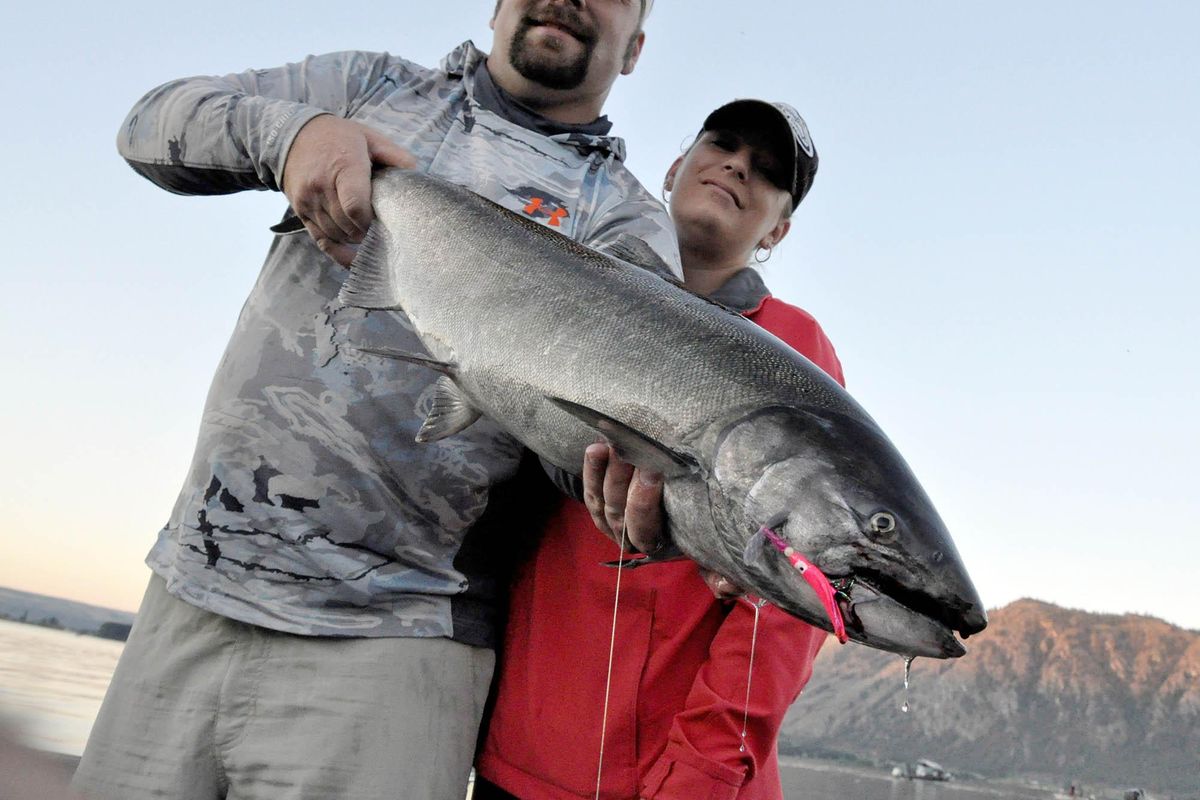Rare Columbia River salmon fishing closure mix of bad ocean, bad river conditions in 2015

This week’s rare closure of most of the Columbia River to salmon fishing is largely the result of a double whammy of bad weather and bad ocean conditions in 2015.
“I can tell you, yes, our phones have been ringing off the hook,” said Bill Tweit of the Washington Fish and Wildlife Department’s Columbia River Policy office. “But not a lot of irate folks.”
Instead, Tweit said most anglers supported the closure and understood the conservation reasons behind it.
Still, Tweit holds himself accountable for underestimating the return. WDFW exceeded its federally mandated harvest allotment of 8.25 percent. The take limit is normally higher, but when projections dip below 200,000, the NOAA Fisheries drops the take percentage.
“It’s a black mark on me when we go over,” Tweit said. “It’s a black mark on us as an agency when we go over like this.”
The count of fall chinook at Bonneville Dam on Monday was 105,795 fish, 75 percent of the preseason forecast. At this time, the count is normally about double that, although last year’s count was also low at 111,993.
Tweit said biologists kept waiting for a big flush of fish to come through the system and raise the season’s numbers. That never happened. Instead, on Thursday WDFW closed salmon fishing (for both chinook and coho) on the mainstem of the Columbia River from Buoy 10 upstream to Highway 395 in Pasco.
The closure comes as the fall chinook count at Bonneville Dam hovers around 29 percent below the preseason forecast.
“They entered the ocean under worsening conditions and they spent at least a couple years of their main ocean resident as the gulf was undergoing some of the worst oceanographic conditions that we have on record,” Tweit said.
The poor runs may continue into 2019 as the 4-year-old fish – traditionally the largest percentage of any given run – start to return.
“This could be a warning that next year could be kind of tough,” Tweit said. “In my memory, we haven’t had a closure of this magnitude in a long time. It’s taking the heart out of the season and really, really restricting access to Coho coming in afterward.”
Salmon aren’t only struggling in the Columbia. Nationwide returns have been low.
“It’s hard to find a chinook run anywhere, from the Sacramento River to the Yukon River, that is doing well at present,” he said.
Although it’s hard to say, Tweit said this could be a sign of the new normal as the climate changes.
“There are hints in this that if some of the scenarios of how climate change could play out in the Northwest are true, it’s going to get tougher for Snake River fall chinook,” Tweit said.
Climate change models for Washington predict “extended periods” where the weekly average water temperature in many rivers and streams exceed 69.8 degrees, according to a 2009 publication examining ways state wildlife managers and advocates can address a changing climate.
This summer, roughly 50 percent of Washington’s rivers and streams had below-normal flows. The Yakima River was as warm as 80 degrees in July.
Still, Tweit emphasized that WDFW has done good work rehabilitating fall chinook. He points to increased runs since the fish were first listed in the ’90s.
“This one down year isn’t enough to reverse what overall is a positive trend,” he said. “A very strong positive trend.”
Paul Hoffarth, Washington Department of Fish and Wildlife fisheries biologist in the Tri-Cities, called the combination of poor river conditions and ocean conditions a “double whammy.”
“Last year was the first year we really started to see a downward trend and this year we’re starting to get the full impact of it,” he said. “We’re hoping we’ve bottomed out.”
Correction: Due to a reporter’s error this story incorrectly identified which organization controls harvest allotments. NOAA Fisheries sets the harvest allotment for salmon on the Columbia River. The story has been updated.